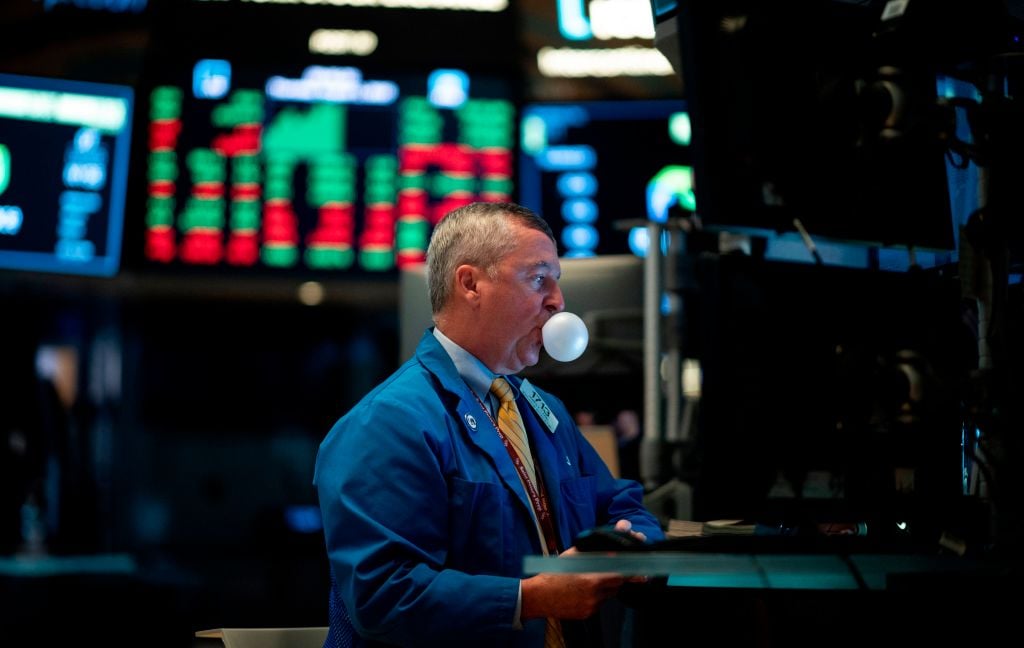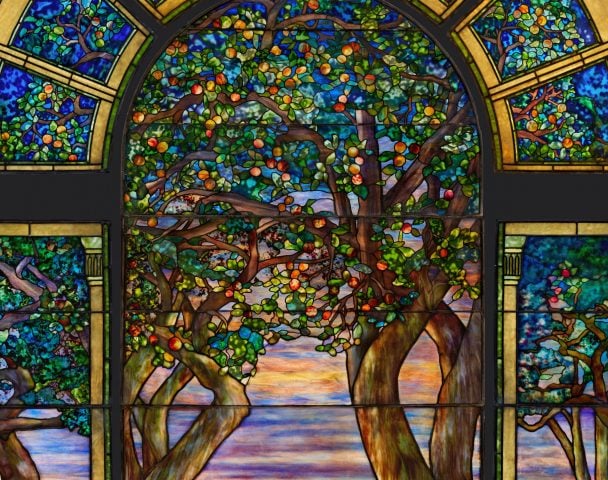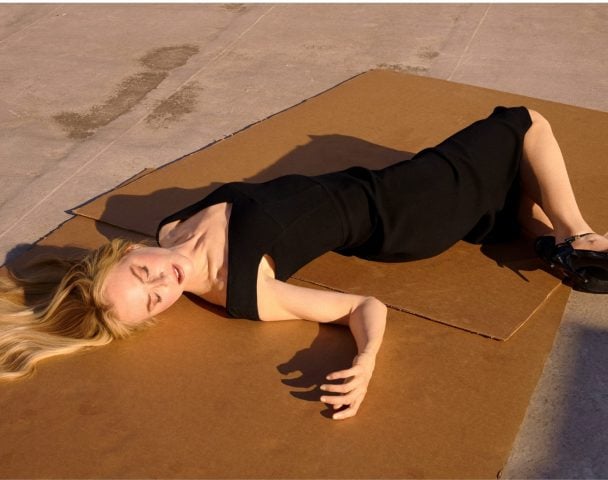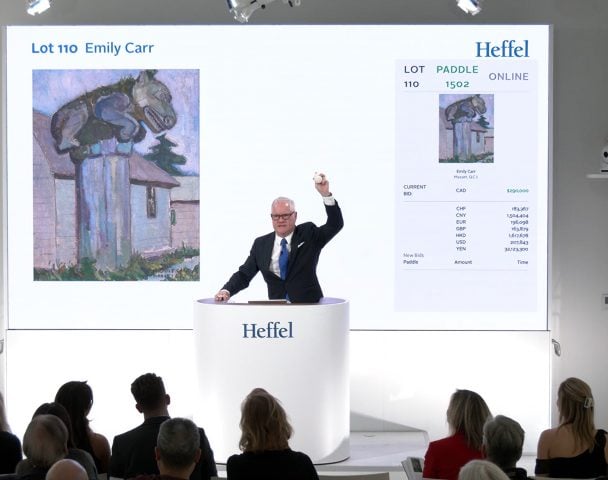Every Wednesday morning, Artnet News brings you The Gray Market. The column decodes important stories from the previous week—and offers unparalleled insight into the inner workings of the art industry in the process.
This week, wondering when a buoyant market will start leaking hot air…
THE TROUBLE WITH BUBBLES
With nearly half the art market’s major 2022 events now behind us, works by young artists are still sucking up most of the excitement and a healthy chunk of the sales revenue in our surprisingly resilient space. So it’s no surprise that several market observers and participants have asked me some version of the same question in the past few weeks: How much longer before the bubble for ultra-contemporary artists pops?
Real talk: if I had a good calendar-based answer to that question, I’d be safeguarding it for my own financial benefit. (What can I say? The 21st-century media economy isn’t exactly building generational wealth for online trade journalists.) Instead, the reason I’m uncomfortable about charting a timeline for the decline of the still-fevered demand for works by young artists is because our understanding of asset bubbles is much hazier than most people invoking the term care to admit. In fact, award-winning economists and financial analysts largely agree that, in any market, your only hope of stamping an accurate expiration date on a bubble is by waiting until it’s already deflated.
Before I barrel into the big ideas, it’s worth summarizing the state of play in the market for the art world’s blazing-bright stars. While this sector has been going bonkers for at least 18 months, the activity has only accelerated this year.
At the 20th- and 21st-century art sales at Christie’s Hong Kong last week, more than one-third of the 35 auction records set belonged to millennial artists, according to a house statement. The evening sale’s fireworks featured results above $1 million for seven ultra-contemporary artists (which we at Artnet define as artists born after 1974), including Hernan Bas, Loie Hollowell, and Hilary Pecis.
A similar story unfolded during May’s auction extravaganza in New York. By my count, works by eight artists aged 40 or younger crossed the million-dollar milestone there, with Maria Berríos, Shara Hughes, Anna Weyant, and the late Matthew Wong doing so multiple times. Several more artists in the ultra-contemporary bracket flirted with or established new bests under the gavel in the mid-to-high six figures.
Outside the auction sector, more and more galleries with searing-hot artists are using rampant demand to strong arm collectors into accepting “buy one, give one” (or BOGO) deals, whereby collectors can acquire paintings for their personal collections only if they also buy another work by the same artist to donate to an institution. Mega-dealers now regularly sign talents who would likely still be years away from reaching such rare air in an earlier generation.
Sustained success has been pushing scores of galleries at all levels of the commercial ladder to add more permanent space for exhibitions and sales. Some secondary-market specialists (like Christophe van de Weghe) have even decided to move into the primary market because that’s where much of the energy and money is—a perfect 180 from where we were in the aftermath of the Great Recession, when a growing number of primary dealers were expanding into the secondary market for survival and clout.
Is this sector of the art economy in a bubble, though? Answering that question turns out to be even harder to judge for paintings and sculptures than for traditional investable assets.
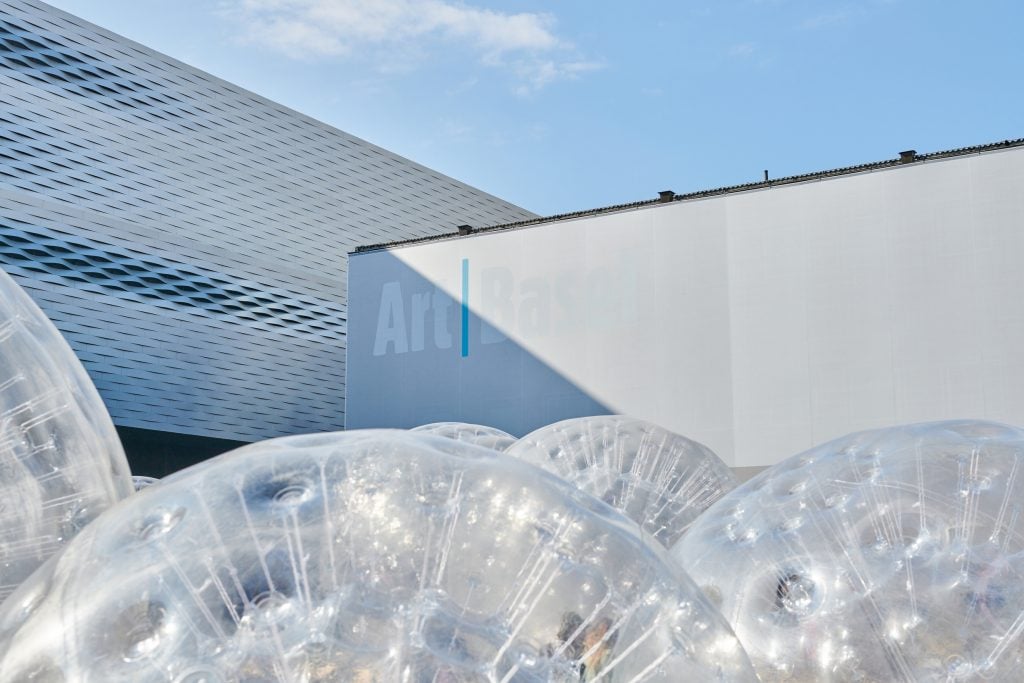
Art Basel 2021. © Art Basel
BUBBLE BOBBLE
Given how often the subject of bubbles drives everyday economic discourse, you would think researchers, analysts, and policy makers had reached at least some loose consensus about how to define the term. But they haven’t.
This fact makes some sense of the punditry landscape: If we had clear criteria for what makes a bubble, people probably wouldn’t be almost constantly scrapping over whether or not we’re in the midst of one. Jerusalem Demsas, a policy reporter with a special focus on U.S. housing (a market that’s no stranger to bubble talk), wrote last year that there is “no agreed-upon economic definition for an asset bubble” even among the discipline’s apex tier of thinkers:
Ask two Nobel Prize-winning economists, and the answer is blunt: ‘It’s impossible to know for sure whether something’s a bubble,’ said Richard Thaler in a conversation with his colleague Eugene Fama.
“What’s the bubble?” Fama added. “The up? The down? The subsequent up?”
The key problem is timing. Even when you can find relatively broad agreement about a given asset-class bubble, solidarity arrives too late. Here’s Fama drawing out the idea a bit more in a 2010 interview:
I think most bubbles are twenty-twenty hindsight. Now after the fact you always find people who said before the fact that prices are too high. People are always saying that prices are too high. When they turn out to be right, we anoint them. When they turn out to be wrong, we ignore them. They are typically right and wrong about half the time.
What makes the task so difficult is that supply and demand are not the alpha and omega of identifying bubbles. For example, Demsas brings up a 2019 study of 40 periods in the U.S. and international stock markets since 1926 where share prices rose by more than 100 percent; the researchers found no evidence on average that these price spikes were followed by “unusually low returns going forward.” In other words, even when demand for stocks suddenly rocketed up to the penthouse level, it didn’t necessarily mean the elevator cable snapped soon after.
I touched on more anecdotal evidence of this phenomenon a few columns ago. Every classical metric agreed that Clinton-era tech stocks were trading for unsustainable prices by 1996, but the dotcom bubble didn’t pop until 2000. Wall Street skeptics started waving price data around to declare that the contemporary stock market had peaked as far back as 2011; even after months of carnage in the financial markets this year, we still have not entered a bear market 11 years later (though this could finally change depending on what happens in the coming weeks).
So, correctly calling an imminent crash demands pinpointing something more than data on economic fundamentals can tell us, even in the most information-rich sectors of the financial markets. No surprise, then, matters only get murkier if you try to do the same in the art market.
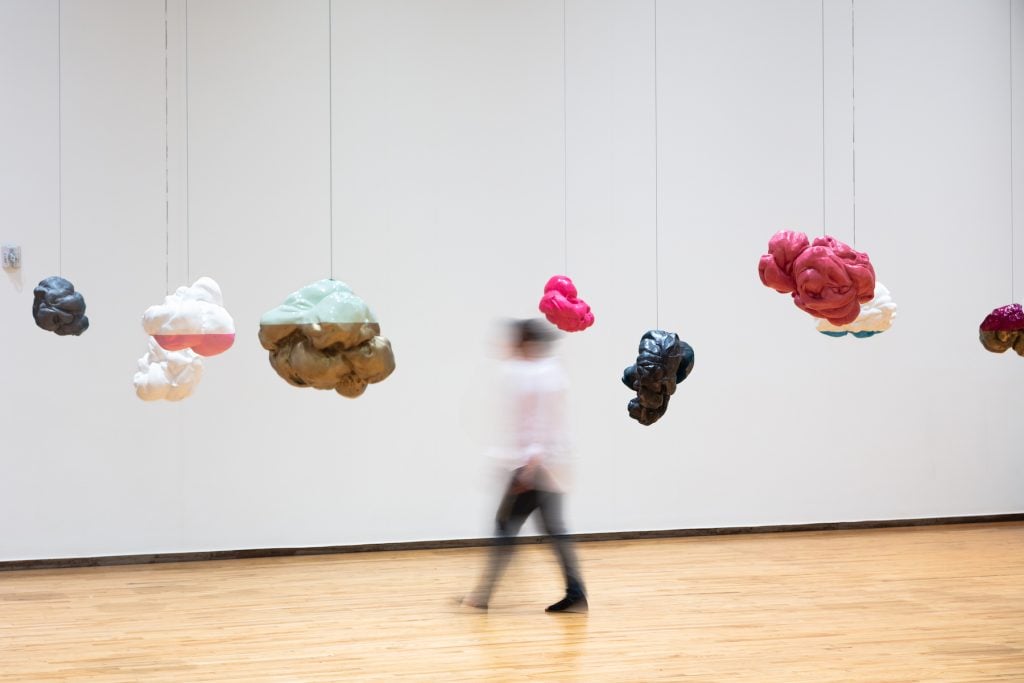
Kim Faler, Double Bubble (2020). Courtesy of the artist.
PSYCHODRAMA
While fast and furious price rises are a key component in inflating asset bubbles, many, if not most, serious economic thinkers also agree that the other necessary ingredient is unbridled sentiment—basically, a shared compulsion among buyers that a particular asset or subset of assets is so desirable that they will go to borderline-manic lengths to try to acquire it. Nobel Prize-winning Yale economist Robert Shiller has even likened the average bubble to an epidemiological phenomenon, “a sort of epidemic of an idea” that everyone should be spending their time, money, or both in the same place.
Unlike epidemics of disease, however, epidemics of ideas are nearly impossible to measure in a rigorous way. Prices send a signal, but we’re still left to make inferences from intuition and anecdotes; the wilder the anecdotes, the more likely it seems to be that a bubble is about to burst. To cite two indelible examples, Demsas recently reported that the U.S. housing market has careened so far off the rails that prospective home buyers are “offering to name their firstborn child after the sellers if their bid is picked,” while 63 percent of home buyers in 2020 put in at least one offer on a house without ever stepping foot inside. That, as my dad would say, is a yikes.
I’m sure several readers have heard gossip about collectors going to extreme lengths of their own to try to jump the wait list for artworks by the current cluster of ultra-contemporary supernovas. There’s a reasonable argument that the pure existence of BOGO deals is proof that a thought epidemic has turned this sector of the market into an unjustified melee between buyers. Still, even if this is true, it tells us nothing about how close the speculative fever might be to breaking.
Artwork’s lack of economic fundamentals makes it even harder to accurately call the top in our niche market. Although Thaler thinks bubbles are nearly impossible to predict in a precise way, he did argue in a 2010 interview that it’s within economists’ capabilities to build a “bubble warning system” for financial markets using objective metrics like price-to-earnings ratios among publicly traded companies. (This kind of system would not be able to time a crash, he said, but it could at least alert the market when the probability of a crash had surpassed certain thresholds.) Yet the only data we could channel into a bubble warning system in the art market would be resale prices. Those are cruder measures than P/E ratios—and scarcer ones, too, since the private art market (both the primary and secondary one) overwhelmingly remains a mass of dark matter to the public.
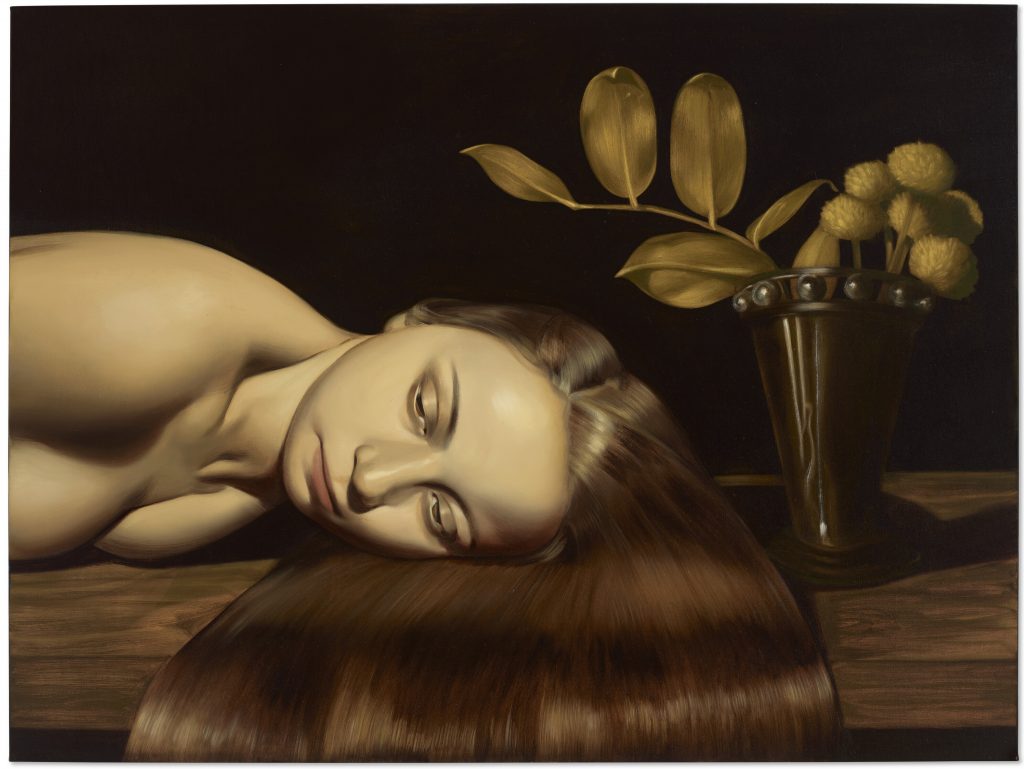
Anna Weyant, Summertime (2020). Courtesy of Christie’s Images, Ltd.
Do dozens and dozens of runaway auction results for ultra-contemporary artists hint that we’re hurtling toward a market correction? Yes, but that’s a fairly worthless statement unless I can also tell you roughly when the correction will come. I can’t do that. In fact, I’m even more sure that I can’t do it now than I was before I started writing this column.
What I can say is that all markets move in cycles, and the lifespan of each new phase depends at least as much on shared beliefs as on economic fundamentals. If this makes timing the financial markets unpredictable, it makes timing the art market (or even one branch of it) all but impossible. Succeeding would demand synthesizing vivid anecdotes that only a small population of people will ever hear, broader market sentiment grounded in personal intuition, and a small collection of verifiable sales results for items whose values are always and forever subjective.
That’s either a fool’s errand or the greatest trick the devil ever pulled. The rest of us will just have to wait and see how much further deep-pocketed buyers are willing to bloat the prices for top ultra-contemporary art, because nothing is really a bubble until after it bursts.
[Vox]
That’s all for this week. ‘Til next time, remember: a good story beats a useful fact almost every time.
